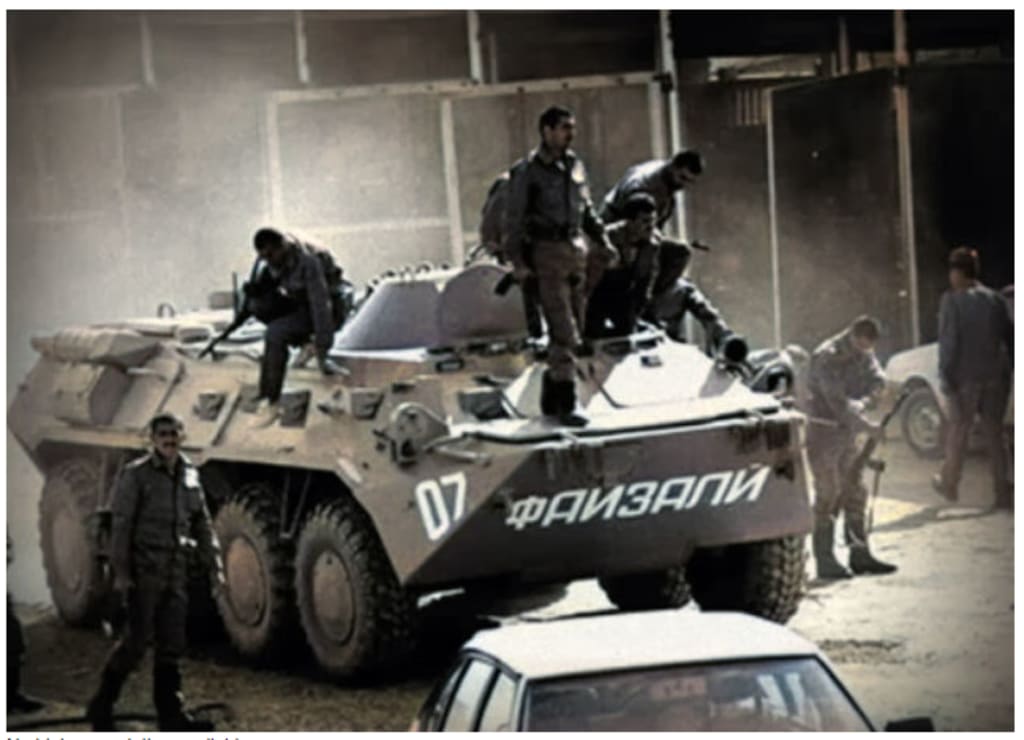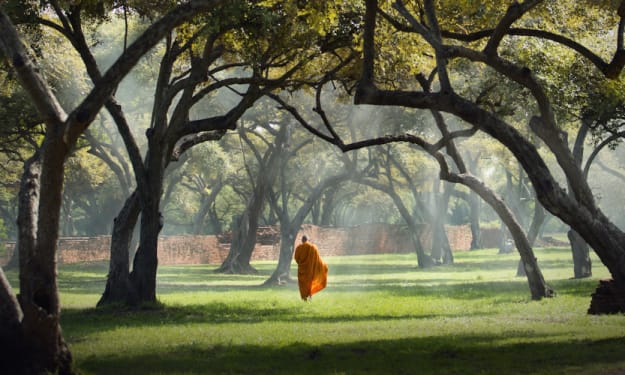Tajikistan: A Multifaceted Tale of Independence
The Republic of Tajikistan, located in the heart of Central Asia, declared its independence from the Soviet Union on September 9, 1991. This proclamation marked a pivotal moment in the nation's history as it began its journey to establish itself as a sovereign state. Tajikistan's path to independence was fraught with challenges, including political turmoil, civil conflict, and economic hardships. However, it also witnessed the resilience and determination of its people. In this article, we will delve into the multifaceted story of Tajikistan's independence, exploring the historical context, the struggle for self-determination, the aftermath of independence, and the nation's progress in the modern era.

The Republic of Tajikistan, located in the heart of Central Asia, declared its independence from the Soviet Union on September 9, 1991. This proclamation marked a pivotal moment in the nation's history as it embarked on a journey to establish itself as a sovereign state, facing various challenges such as political upheaval, civil conflict, and economic hardships.
In this article, we will delve into the multifaceted narrative of Tajikistan's independence, exploring the historical context in short brief. Tajikistan's primary ethnic group is the Tajiks, with minority populations of Uzbeks, Kyrgyz, and a small Russian community. It is worth noting that Tajiks are a Persian-speaking Iranian ethnic group native to Central Asia, primarily residing in Afghanistan, Tajikistan, and Uzbekistan.
Prelude of Primary History:
Before the Arabs came to Tajikistan, there were some important empires and cultures there. These included the Bactrian Empire, Sogdian Civilization, Kushan Empire, and the Graeco-Bactrian Kingdom, which was a mix of Greek and Persian cultures around 250-125 BCE. These ancient civilizations laid the foundation for Tajikistan's rich history and culture even before the Arab influence. At one point, Tajikistan was also briefly ruled by the Tibetan Empire and the Tang dynasty from 650 to 680 CE, and later by the Umayyads in 710 CE.
Please CLICK HERE for more fascinating Historical Events in short brief.
Arabs Conquered:
When the Arabs took over Tajikistan, it wasn't one united place. Instead, it was made up of different cities, kingdoms, and local leaders. The Arab conquest happened in the 7th and 8th centuries, and it brought Islam to the region. Tajikistan, with its diverse people and landscapes, felt the influence of different Arab leaders and governors who were chosen to rule these newly acquired lands for the Islamic caliphate. These Arab conquerors played a big part in shaping Tajikistan's culture and religion during that time.
The Battle of Talas:
In 751, there was a major conflict that called the Battle of Talas. It was between two powerful groups: the Arab Abbasid Caliphate and the Chinese Tang Dynasty. This battle happened near the Talas River, which is now in Kazakhstan. They were fighting because they wanted to control the Silk Road, which was a very important trade route back then.
The Arab Abbasid Caliphate won the battle, and after that, they took some Chinese soldiers who knew how to make paper. This knowledge spread to the Arab world and later to Europe, and it changed how people made paper.
The Battle of Talas also marked the end of the Tang Dynasty's expansion towards the west and led to Islamic control of Transoxiana for the next 400 years. However, direct Muslim Arab rule ended in 821, and power shifted to the Samanid Empire.
China had a claim on a piece of Tajik territory, about 28,430 square kilometers (10,977 square miles), since 1884, which was taken from the Qing dynasty through unfair agreements.
The Conflict between Turks and Persian:
The Samanid Empire, led by Persians, existed from 819 to 999. It took control of the region, particularly Samarkand and Bukhara, which are now in Uzbekistan. The area was known as Khorasan on that period. The empire covered places like Afghanistan, parts of Iran, Tajikistan, Turkmenistan, Uzbekistan, Kyrgyzstan, some of Kazakhstan, and Pakistan.
Four brothers, Nuh, Ahmad, Yahya, and Ilyas, started the Samanid state. Each of them ruled a piece of land under the Abbasids' control. In 892, Ismail Samani brought all these pieces together and made a big Samanid state. This ended the old feudal system, and the Samanids became independent from the Abbasids.
Later on, the Kara-Khanid Khanate, which was Turkic, took over Transoxania. Transoxania is a bit like modern Uzbekistan, Tajikistan, parts of Kyrgyzstan, and some of Kazakhstan. They ruled from 999 to 1211. The Kara-Khanid Khanate's presence marked a shift from Iranian to Turkic influence in Central Asia, but slowly they adopted the Perso-Arab Muslim culture of the region.
Please CLICK HERE for more fascinating Historical Events in short brief.
Mongol Empire & Timurid Dynasty:
In the 13th century, the Mongol Empire came through Central Asia. They attacked the Khwarezmian Empire, taking cities, stealing things, and hurting people and seized that area from 1218 to 1370. Then, Tamerlane built the Timurid Empire (1370–1506) in and around modern-day Tajikistan and Central Asia, becoming the first ruler of the Timurid dynasty.
After Timur died, his empire fell apart. It broke into smaller parts ruled by different leaders called Khans. These included the Khanate of Khiva, the Khanate of Bukhara, the Khanate of Kokand, and the Khanate of Kashgar.
In the 16th century, Modern Tajikistan was under the rule of the Khanate of Bukhara ((The Uzbek, a Turkic ethnic group). When the Khanate fell it came under the control of Iranian-led Afsharid Dynasty and Emirate of Bukhara.
However, in the 19th century, something unusual happened when Russian Empire, started taking control of some parts of the region.
Russian Annexation:
In the late 19th century, the Russian Empire expanded into Central Asia, including Tajikistan, mainly for access to cotton. Despite this, Tajikistan wasn't strongly influenced by Russia. During this time, a movement called the Jadidists emerged, aiming for modernization. The Russians saw this as a threat because they were mainly Christian.
There were conflicts, like uprisings in 1910-1913 and clashes in 1916 over forced conscription during World War I. After the Russian Revolution of 1917, a war happened in Central Asia as guerrillas, called basmachi, fought Bolshevik armies. The Bolsheviks eventually won, but it was a brutal conflict with suppression of religion and a famine.
In 1924, Tajikistan was made part of Uzbekistan, but it became its own republic in 1929. Some parts with mostly Tajik people remained in Uzbekistan. Collectivization and cotton production grew, but it led to violence and resistance. Stalin's purges in the 1920s-1930s removed many people, with Russians taking their place in leadership positions.
During World War II, many Tajiks fought, and a significant number lost their lives. After the war, efforts were made to develop Tajikistan, but it lagged behind other Soviet Republics. In the late 1980s, Tajik nationalists called for more rights, leading to disturbances in 1990. The Soviet Union collapsed in 1991, and Tajikistan declared its independence on September 9, 1991. This day is now celebrated as Independence Day in Tajikistan.
Tajikistan after Independence:
Right after becoming independent, Tajikistan got caught up in a civil war. Different groups were fighting, and they had support from countries like Afghanistan, Iran, Pakistan, Uzbekistan, and Russia. Russia and Iran tried to keep things calm to avoid U.S. or Turkish involvement. Russia supported the government side and sent troops to protect Tajikistan's border with Afghanistan. The war finally ended in 1997 when the government and the Islamist-led opposition made a peace deal. After that, Tajikistan started building a more stable government, and they had elections in 1999.
Political Stability: Tajikistan maintained political stability under the long-serving leadership of President Emomali Rahmon, who has been in power since 1994. His leadership provided a degree of stability, but it was criticized for limited political pluralism.
Economy and Remittances: Tajikistan's primary sources of revenue come from the exportation of aluminum, gold, and cotton. The country's economy also relied significantly on remittances from Tajik labor migrants working abroad, particularly in Russia. This had both positive and negative impacts on the country's economy.
It is notable that remittances received by Tajikistan were estimated to constitute over 32 percent of the country's gross domestic product (GDP) in 2022. This marked the highest level of dependency on remittances among European and Central Asian nations. In total, Tajikistan's remittances amounted to £3.2 billion in that year.
Infrastructure Development: Tajikistan invested in infrastructure development, including road networks and hydropower projects, aimed at improving connectivity and energy production.
The Pamir Mountains:
The Pamir Mountains often referred to as the "Roof of the World," are a majestic and remote mountain range located in Central Asia. Most of the Pamirs lie within Tajikistan, but smaller portions extending into neighboring countries such as Afghanistan, China, and Kyrgyzstan. In recent years, the Pamir Mountains have gained attention as a destination for adventure tourism, attracting trekkers, mountaineers, and photographers who seek to explore its natural beauty.
Conclusion:
Tajikistan's journey to independence from the Soviet Union in 1991 was marked by historical richness and challenges. After independence, the nation faced a civil war, but eventually achieved political stability under President Emomali Rahmon. The economy heavily depends on remittances from Tajik labor migrants abroad, leading to mixed economic impacts. Infrastructure development and the allure of the Pamir Mountains as a tourism destination have also played significant roles in shaping Tajikistan's post-independence trajectory.
Please CLICK HERE for more fascinating Historical Events in short brief.
About the Creator
Mohammed Shahidullah-Bin-Anwar
Mohammed Shahidullah, a Blogger, writes on Historical News. After completing Master's in Bengali from Dhaka University, I accumulated over 15 years of experience in various private companies. Plz visit TIME PRINTER, you will not be upset.
Enjoyed the story? Support the Creator.
Subscribe for free to receive all their stories in your feed. You could also pledge your support or give them a one-off tip, letting them know you appreciate their work.






Comments
There are no comments for this story
Be the first to respond and start the conversation.